
Published:
Readtime: 9 min
Every product is carefully selected by our editors and experts. If you buy from a link, we may earn a commission. Learn more. For more information on how we test products, click here.
- NSW to legalise e-scooters under new safety framework.
- Proposed laws allow riding on shared paths, roads signposted less than 50km/h.
- Footpath use remains illegal; rules stricter than other states (Queensland, ACT).
- E-bike definitions, safety standards under government review.
- 1.35 million e-mobility devices used, about half linked to accessing transport.
There are around 1.35 million e-micromobility devices in NSW homes, and the NSW Government is about to do its best to define their legal use.
It seems the Minister for Transport John Graham and Minister for Roads and Minister for Regional Transport Jenny Aitchison understand that the vast majority of these devices are used illegally, so they’ve struck up a safety-focused framework for e-scooters and e-bikes to better regulate their legal use. The proposed changes to the rules were tabled in Parliament in early May 2025, but there’s no date yet for when they will be rolled out to the public. It is currently illegal to ride an e-scooter on public roads and paths.
“They’re known as ‘micro’ devices but e-bikes and e-scooters represent a major shift for our road and transport networks,” said Minister for Transport John Graham on the proposed changes. “We believe a sensible set of rules will promote the health and lifestyle benefits of e-bikes and e-scooters while protecting the safety of riders and everyone else sharing the paths and roads with them.”
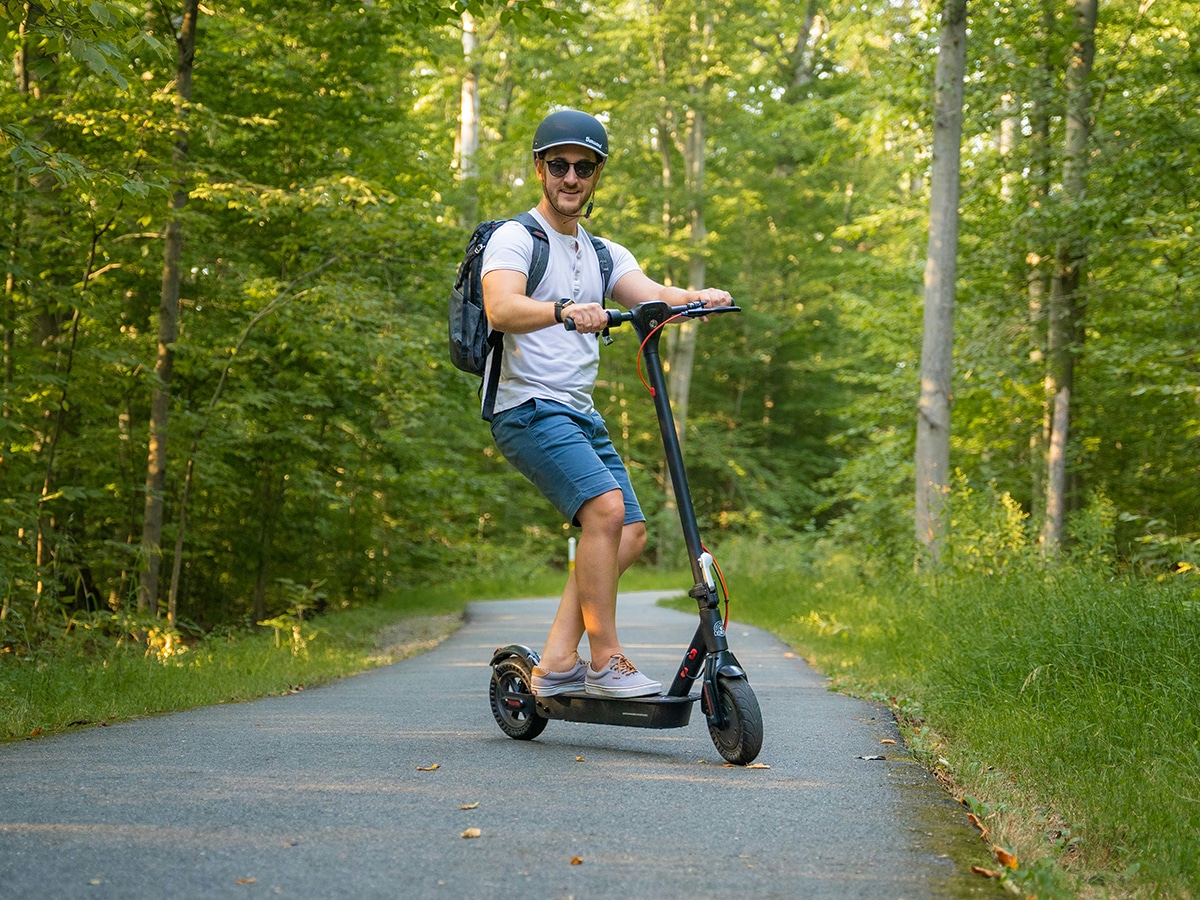
Current E-Scooter Rules in NSW and How They Compare to Other States
E-scooters are illegal to ride on NSW public roads and paths, but this hasn’t stopped the predominately Chinese-made devices from becoming an extremely popular choice for commuters. Minister Jenny Aitchison estimates that there are more about 1.35 million e-micromobility devices being used in NSW, and almost half of those are used to connect with public transport.
The police are responsible for the enforcement of e-scooters, and these are the current offences (and fines) for riding them in NSW:
- Ride a privately owned e-scooter on road or related area – motor vehicle rules apply
- Ride on road with speed limit over 50 km/h – $136
- Ride on footpath – $136
- Ride an e-scooter not in single file on roads – $136
- Ride e-scooter whilst under minimum age of 16 years – $136
- Exceed maximum operating speed limit of 20km/h – $136
- Carry passengers – $136
- Riding whilst under the influence of alcohol – motor vehicle rules apply
- Riding whilst under the influence of a drug (other than alcohol) – motor vehicle rules apply
- Use mobile phone whilst riding – $410
- Fail to wear helmet – $410
- Ride at night without appropriate lights and reflector – $136
It makes sense to balance the legal and illegal use of e-scooters, but Aitchison understands that it’s hard to balance the safe and unsafe use of the devices. “It is a difficult scenario, there’s no doubt about that,” said the Minister. “The option to do nothing is not there.”
Other Australian states have more relaxed e-scotter laws, including:
How Does that Compare to Victoria E-Scooter Rules?
It is legal to ride an e-scooter in Victoria if you:
- Ride on:
- shared-use paths (not on footpaths), or
- roads that have a speed limit up to 60km/h
- are at least 16 years old
- wear a helmet
- do not travel more than 20km/h
- do not use your mobile phone
- do not carry a passenger (dinking).
The definition of an e-scooter in Victoria is important to note, and it can’t be more than 45kg in weight or a maximum speed above 25 km/h when ridden on level ground amongst other definition-base rules.
How Does that Compare to Queensland E-Scooter Rules?
It is legal to ride an e-scooter in Queensland if you:
- Ride on:
- footpaths — 12km/h maximum
- shared paths —12km/h maximum (unless signed otherwise)
- separated paths—25km/h maximum (unless signed otherwise)
- bicycle paths — 25km/h maximum (unless signed otherwise)
- local streets — (50km/h or less and no dividing line) – 25km/h maximum
- are at least 16 years old
- keep left and give way to pedestrians
- travel at the right speed for where you are
- travel at a safe distance from a pedestrian so you can avoid a collision
- keep left of oncoming bicycles and other personal mobility devices
Queensland has arguably the most relaxed laws of all states when it comes to e-scotters, but it’s important to note the definition of e-scooters in this state as they vary greatly from others. They define the scooters by size, and they must be less than 1,250mm long by 700mm wide by 1,350mm high (or 700mm long by 1,250mm wide by 1,350mm high) and weigh less than 60kg. Interestingly, they’re not speed restricted.
How Does that Compare to ACT E-Scooter Rules?
It is legal to ride an e-scooter in the ACT if you:
- Ride on:
- footpaths — 15 km/h maximum
- shared paths — 25 km/h maximum
- bicycle paths — 25 km/h maximum
- bicycle side of separated paths — 25 km/h maximum
- not permitted on roads unless there is no footpath, shared path or nature strip next to the road, or
- it is impracticable to travel on one of those areas
- any personal mobility device that travels more than 25 km/h is forbidden from travelling on paths
The e-scooter rules in Queensland and the ACT make the proposed rules in NSW sound very restrictive and, quite frankly, backwards. Rides in both these states are allowed to ride on footpaths, shared paths, and bicycle paths, not roads. Meanwhile, the proposed rules in NSW would outlaw these shared areas and legalise their use on roads.
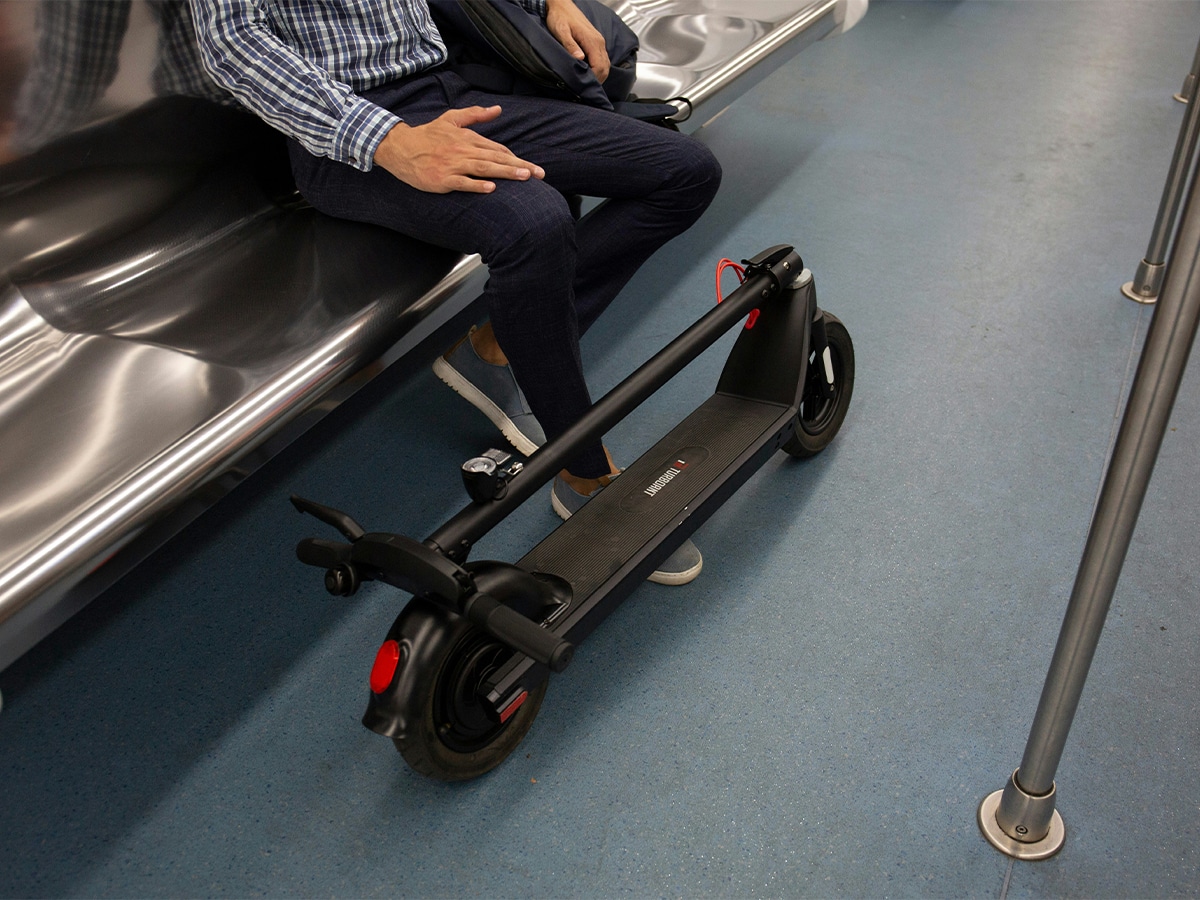
Proposed E-Scooter Rules in NSW
The proposed e-scooter rules in NSW will legalise the use of these devices on public roads and shared paths, but they’re still highly restrictive compared to other states such as Queensland and the ACT where it legal to ride them on footpaths.
NSW Government will propose that e-scooters can be ridden on shared paths (identified by signs and/or pavement markings showing a pedestrian and a bicycle) with a default speed limit of between 10km/h and 20km/h. They will also be legal to ride on roads that are signposted at 50km/h, where they’re limited to 20km/h. What happens when your 50km/h road turns into an 80km/h road? Well, these are the types of questions that the Minister for Transport John Graham will have to answer for before these propose laws are put into place.
If proposed laws are passed, it will be legal to ride an e-scooter in NSW if you:
- Ride on:
- shared paths — 10km/h and 20km/h maximum
- roads — 20km/h maximum
- are at least 16 years old
- wear an approved bicycle helmet
- must have a bell, horn, or similar warning device
- must use the e-scooter lights when riding in darkness or hazardous weather conditions
- must not carry another person or animal on your shared e-scooter
- BAC limit of 0.05 applies when riding an e-scooter
- do not travel more than 20km/h
It’s unclear if e-scooters will be legal to ride on bicycle paths, but current NSW laws permit people using skateboards, foot scooters and rollerblades. Trials have also legalise the use of e-scooters in bicycle lanes. We would therefore assume that the laws would permit e-scooters being ridden in bicycle lanes at the proposed speed limited of between 10km/h and 20km/h.
The proposed rules would prohibit e-scooters from being ridden on pedestrian-only footpaths, but the government is reviewing the use of e-bikes and may revise footpath riding in the NSW Road Rules.
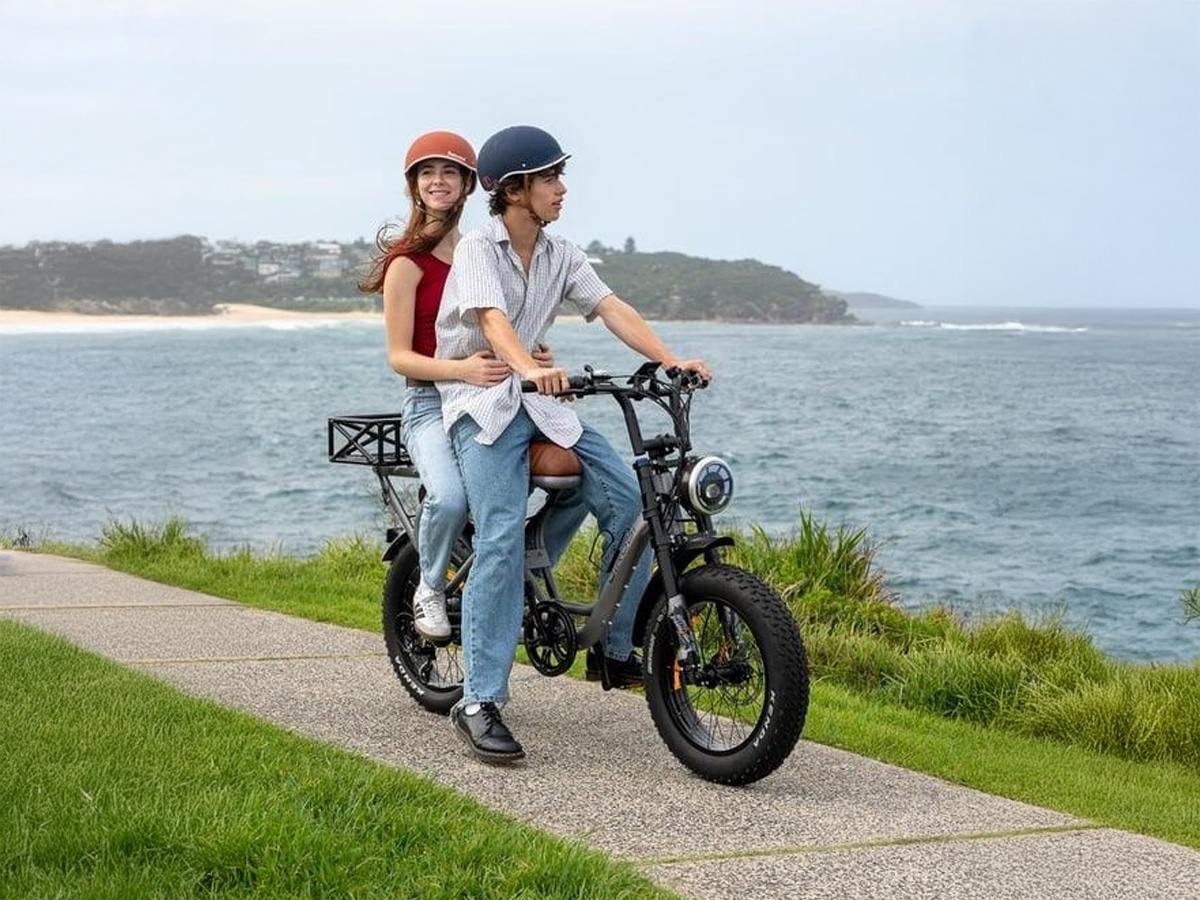
E-Bike Laws Will Also Be Reviewed
Next to the legalisation of e-scooters in NSW, the Labor Government will review the formal definition of an e-bike within NSW’s road rules.
Yet to be introduced, the new definition of legal e-bikes will stipulate that they must be pedal-powered primarily, building on the current laws that say a motor can’t provide more than 200W of additional power. To those living on the Northern Beaches of Sydney, excitingly, this means “Fat bikes” like those above will fall under the definition of legal e-bikes provided they have not been modified. Yew!
“We believe a sensible set of rules will promote the health and lifestyle benefits of e-bikes and e-scooters while protecting the safety of riders and everyone else sharing the paths and roads with them,” said Transport Minister, John Graham. “We recognise the community’s concerns, particularly around device modification, fire risk, discarded shared e-bikes and poor rider behaviour—which is why we’re taking action.”
With the new e-bike rules, the goverment will look to establish new safety standards and risk-based protocols to reduce the likelihood of lithium-ion battery fires. There’s a cocern that these devices—mostly manufactured in China—could pose a safety risk as they’re not made to Australian standards.
Meanwhile, the government will also consider increasing the on-going investment in critical infrastructure to improve the future design of shared paths.
“Thousands of people in NSW are already making the shift to e-micromobility as a healthy,” said Minister for Roads and Minister for Regional Transport Jenny Aitchison. “Cost effective and environmentally friendly way to move around urban and regional communities. It’s pleasing we’re able to progress this key reform.”
Government statistic show that 47% of people use e-mobility devices to connect to public transport, 34% of them are used to replace car trips in Greater Sydney, 45% in Regional NSW, and the highest usage is among those aged 18-29, followed by 11-17, followed by 30-49 including working parents. More information about the incoming changes can be found at the NSW Government website, linked below.

























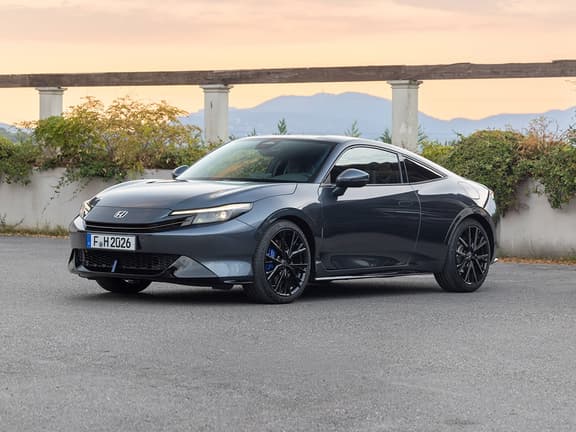




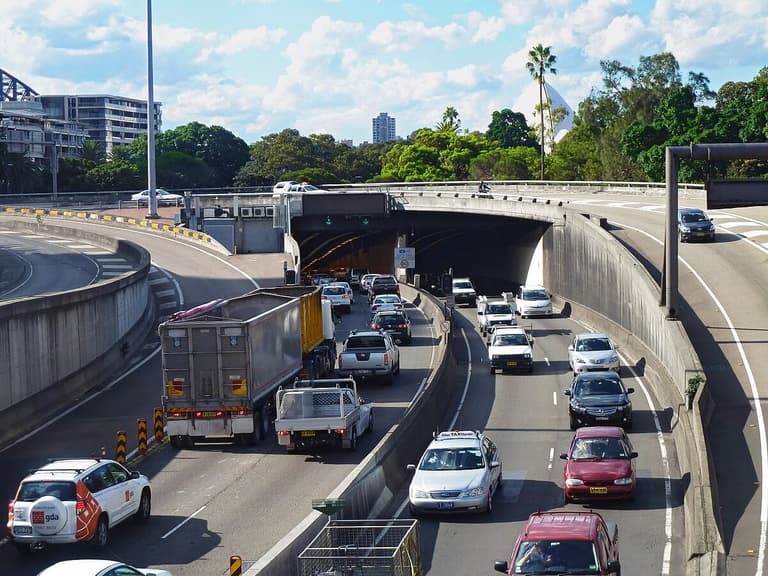



Comments
We love hearing from you. or to leave a comment.